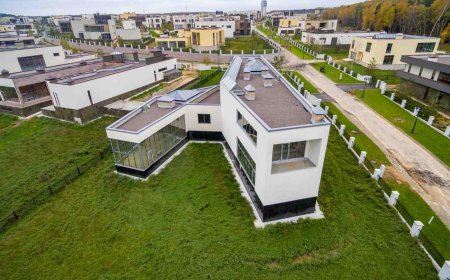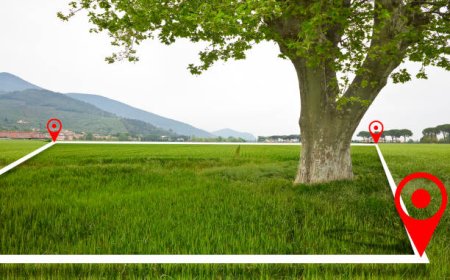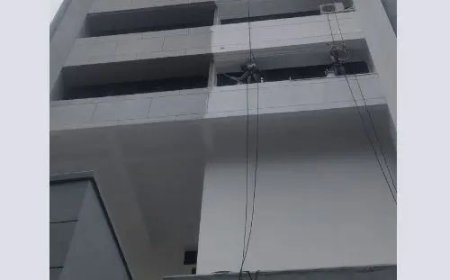Efficient Power Management with Power Distribution Units
Explore how Power Distribution Unit PDUs enhance computer hardware infrastructure. Learn their importance, types, and applications in IT Hardware environments.

In todays increasingly digital world, the stability and performance of networked environments rely heavily on efficient power distribution. The Power Distribution Unit (PDU), a foundational element in any IT environment, ensures that all connected computer hardware receives the necessary and reliable power to operate efficiently. Whether deployed in a data center, server room, or enterprise network, a PDU plays a pivotal role in supporting IT hardware infrastructure with clean, balanced power delivery.
This article delves deep into the workings, benefits, types, and future of Power Distribution Unit PDUs, explaining why they are vital in modern computing and networking environments.
What is a Power Distribution Unit (PDU)?
A Power Distribution Unit (PDU) is a device designed to manage and distribute electrical power to multiple devices within a network or server environment. Functioning much like a multi-socket power stripbut with far greater sophisticationPDUs ensure optimized power delivery, overload protection, monitoring, and redundancy.
PDUs are a staple in IT hardware infrastructure, typically mounted within server racks to feed power to critical systems such as servers, routers, switches, and storage devices. These units help maintain uptime, reduce power-related failures, and allow for more efficient management of energy usage.
The Importance of PDUs in IT Hardware Systems
Stability and Load Balancing
In dense computer hardware environments like data centers, each rack may contain multiple devices pulling significant current. Without proper power management, this can lead to overloads and system failure. PDUs distribute power evenly across devices and provide real-time load data, helping technicians prevent overcurrent conditions.
Rack Optimization
PDUs are typically installed vertically (0U) or horizontally (1U or 2U) within a rack. Their form factors are designed to maximize space utilization while delivering power to every device. This efficient design is critical in compact IT hardware environments where rack space is at a premium.
Power Monitoring and Control
Advanced Power Distribution Unit PDUs offer remote power monitoring, allowing administrators to observe consumption patterns, diagnose problems, and even power-cycle equipment without being physically presentan essential feature for organizations operating in distributed locations or managing colocation data centers.
Types of Power Distribution Unit PDU
Understanding the various PDU types is crucial for selecting the right solution for your computer hardware setup.
1. Basic PDU
This is the most straightforward type, designed to provide consistent power to connected equipment. Basic PDUs do not offer remote monitoring or control features and are best suited for small-scale environments or non-critical deployments.
2. Metered PDU
These PDUs feature a local LED or LCD screen to display real-time data on power usage. While not remotely manageable, they provide insights into load balancing and energy consumption, helping avoid overload conditions.
3. Monitored PDU
A Monitored Power Distribution Unit PDU can report real-time data remotely, typically via SNMP or web interface. Network administrators can track metrics such as amperage, voltage, and power factor, enhancing visibility across IT hardware deployments.
4. Switched PDU
These units offer both monitoring and control, allowing individual outlets to be turned on or off remotely. This is ideal for managing power to specific computer hardware devices, especially in remote or unmanned facilities.
5. Automatic Transfer Switch (ATS) PDU
ATS PDUs offer redundancy by connecting to two power sources. If the primary source fails, the PDU automatically switches to the backup, maintaining continuity for mission-critical systems.
Features of Modern Power Distribution Unit PDUs
Remote Access and Control
One of the most beneficial features of a modern Power Distribution Unit PDU is remote management. Whether through IP, web GUI, or SNMP, administrators can control and monitor devices globally.
Environmental Monitoring
Some PDUs come equipped with environmental sensors to monitor temperature, humidity, and airflow. This allows administrators to correlate power data with environmental conditions for smarter IT hardware management.
Per-Outlet Power Monitoring
High-end PDUs allow per-outlet monitoring, enabling precise tracking of individual device consumption. This helps identify inefficient computer hardware components and optimize energy usage.
Circuit Breakers and Overload Protection
PDUs are built with internal circuit breakers that help prevent electrical overloads. This is essential for preserving the health and uptime of critical IT hardware.
Benefits of Using Power Distribution Unit PDU
Improved Uptime
Redundancy, real-time monitoring, and remote management capabilities all contribute to maximizing uptime. A reliable Power Distribution Unit PDU acts as the power backbone of any IT environment, shielding it from disruptions.
Cost Efficiency
By tracking power usage, organizations can make data-driven decisions on energy consumption, potentially reducing energy bills and extending the lifespan of computer hardware through load balancing.
Scalability
PDUs are available in configurations suitable for everything from small server rooms to hyperscale data centers. Their modular design and compatibility with various rack setups make them an ideal choice for scalable IT hardware deployments.
Compliance and Reporting
With regulations like ISO 50001 and GDPR encouraging energy efficiency and secure data environments, PDUs that support advanced reporting can assist in compliance efforts.
Applications of PDUs in Different Industries
Data Centers
The most obvious use case for Power Distribution Unit PDUs is in data centers, where hundreds or thousands of servers must operate continuously. PDUs ensure each rack and device receives the correct voltage and amperage, enhancing the reliability of computer hardware systems.
Enterprise Offices
In corporate environments, PDUs help manage distributed networks, especially in server closets, wiring rooms, and edge computing setups. Switched PDUs allow remote rebooting of devices, saving valuable technician time.
Industrial Automation
Industrial IT hardware often requires clean and uninterrupted power. PDUs ensure that machines, sensors, and control panels are all safely powered and monitored.
Healthcare
Hospitals and research labs use PDUs to maintain reliable power to mission-critical devices like imaging systems, diagnostic tools, and secure data storage units.
Best Practices for Choosing and Using PDUs
Evaluate Power Requirements
Determine your total power draw (in amps or watts) and choose a PDU with headroom to support future growth. Factor in the number of devices per rack and the maximum current rating.
Match Plug and Receptacle Types
PDUs come with a range of input plug typesNEMA, IEC, and more. Ensure compatibility with your IT hardware and power source.
Choose the Right Monitoring Level
Basic and metered PDUs may suffice for smaller installations. For enterprise or critical systems, go for switched or monitored units that offer granular control.
Plan for Redundancy
Deploy dual PDUs and use ATS models to create power redundancy. This ensures uptime during maintenance or in case of power failure.
The Evolution of Power Distribution Technology
Smart PDUs and IoT Integration
Todays PDUs are increasingly becoming smart, integrating with IoT platforms to offer data analytics, predictive maintenance, and AI-driven energy optimization.
Edge Computing and Distributed Networks
With the rise of edge computing, smaller racks are being deployed in remote areas. Compact PDUs provide these setups with reliable power, remote monitoring, and environmental sensors.
Green IT and Sustainability
Modern PDUs contribute to green IT initiatives by enabling power optimization, reducing carbon footprint, and providing the data necessary for environmental compliance.
Challenges and Solutions in Power Distribution
Heat Management
Power-intensive computer hardware generates heat. PDUs with environmental sensors and cooling alerts can help maintain temperature thresholds and prevent damage.
Cable Management
Improper cabling can lead to airflow blockages and tangled wires. Modular PDUs and vertical mounting options assist with better cable management.
Budget Constraints
While smart PDUs cost more upfront, their ROI through energy savings, downtime reduction, and automation often justifies the investment.
Future Trends in Power Distribution Unit PDU
AI-Driven Energy Management
Expect future PDUs to include AI features that auto-adjust outlet power based on workload predictions, helping balance power consumption across devices and even across data centers.
Integration with DCIM
Data Center Infrastructure Management (DCIM) platforms are now integrating directly with smart PDUs. This provides unified dashboards for monitoring power, space, cooling, and security across all IT hardware.
Customizable and Modular Designs
Next-generation PDUs will be modular, allowing users to customize outlets, plug types, and monitoring features based on their unique computer hardware setup.
Conclusion:
In todays technology-driven world, where business operations hinge on uninterrupted connectivity and optimal system performance, the Power Distribution Unit (PDU) stands out as a fundamental component in IT hardware environments. Whether deployed in large-scale data centers, enterprise server rooms, or edge computing sites, PDUs ensure that all critical computer hardware receives reliable, safe, and organized power.
By offering features such as remote monitoring, load balancing, outlet-level control, and environmental sensing, modern PDUs empower administrators to reduce downtime, improve energy efficiency, and scale with confidence. They are no longer simple accessories but strategic tools that support sustainability, regulatory compliance, and long-term infrastructure resilience.
As IT ecosystems evolve with trends like edge computing, AI, and cloud integration, so too will PDUsgrowing smarter, more modular, and deeply integrated with broader IT management systems. For organizations aiming to build future-ready, energy-efficient, and secure infrastructures, investing in the right Power Distribution Unit PDU solutions is not just recommendedits essential.

































